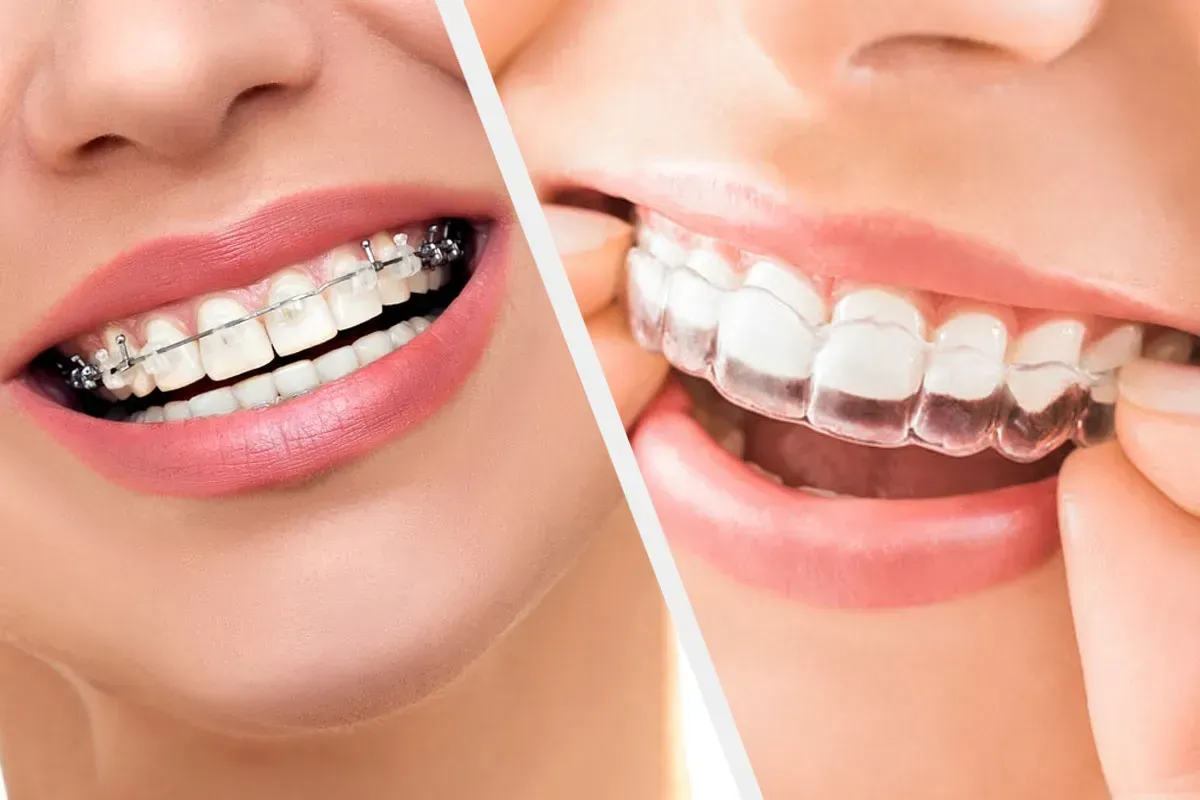Conquering Your Dental Fear: Effective Strategies for a Relaxing Visit
Understanding Dental Anxiety
Understanding dental anxiety is crucial for improving oral health and ensuring positive dental experiences. Dental anxiety encompasses various fears, such as the fear of pain, loss of control, or negative past experiences. For many fearful patients, these worries can lead to extreme anxiety, making dental visits a daunting task.
There are several strategies to help overcome this fear. Deep breathing exercises and behavioral therapy can assist in calming anxious patients. Sedation dentistry options, such as nitrous oxide or oral sedatives, provide different levels of sedation to alleviate severe anxiety. Conscious sedation allows patients to remain aware but relaxed during dental procedures.
Communication with your dental team is essential. Engaging with them about your anxiety can help tailor dental treatment to your needs and comfort. Dental offices may also offer distractions like music or TV to ease tension. Understanding and addressing the degree of anxiety can turn fearful dental visits into manageable experiences, ultimately leading to better dental care and oral health.
Causes of Dental Fear
Dental fear is a common issue affecting many people, often stemming from various causes. One primary factor contributing to dental anxiety is fear of pain, especially among those who have had negative or traumatic experiences in the past. Such experiences can lead to an intense fear that manifests as severe anxiety or even panic attacks during dental visits.
Another significant cause is the loss of control or the feeling of vulnerability when seated in the dental chair. Anxious patients may struggle with having their personal space invaded or being unable to communicate while undergoing dental procedures. This loss of autonomy can elevate anxiety levels, turning a routine check-up into a stressful event.
Lastly, the clinical environment of dental offices, including sights, sounds, and smells, can trigger anxiety in some patients. For individuals with anxiety disorder or extreme anxiety, such sensory stimuli can heighten distress. Understanding these causes can help in developing strategies to reduce dental fear, ensuring better oral health care experiences for fearful patients.
Self-Reflection: Identifying Your Fears
Self-reflection is a vital tool for identifying and addressing your fears. Begin by setting aside quiet time to think about situations or experiences that trigger feelings of discomfort or concern. Consider whether these reactions are linked to specific fears such as fear of failure, fear of change, or fear of rejection.
Once you've identified these triggers, try to understand their origins. Reflect on past experiences and how they might have contributed to your current fears. Understanding the root causes can help you address them more effectively. It's also beneficial to evaluate the impact of these fears on different aspects of your life, such as personal growth, relationships, or career progress.
Journaling or writing your thoughts can provide clarity and serve as a record of your progress. Additionally, discussing your fears with trusted friends or a mental health professional can offer new perspectives and coping strategies. By recognizing and addressing your fears, you pave the way for personal growth and resilience.
Here's a simple self-reflection process to identify fears:
- Identify triggers and situations causing discomfort.
- Analyze the origins and past experiences related to these fears.
- Evaluate the impact of fears on your life.
- Document and reflect through journaling.
- Seek support from friends or professionals.
Communicating with Your Dentist About Anxiety
Communicating with your dentist about dental anxiety is crucial for a comfortable dental experience. Start by being open about your fears and the degree of anxiety you experience. Mention any previous negative or traumatic experiences that contribute to your dental fear. This helps the dental team tailor the environment and approach to your needs.
Understanding the available options can significantly reduce fear. Discuss sedation dentistry, such as nitrous oxide or oral sedatives, to see what levels of sedation might be appropriate for you. Knowing about these options can help alleviate intense fears related to dental procedures and loss of control.
You can also inquire about behavioral therapy techniques or deep breathing exercises to manage severe anxiety or panic attacks during dental treatment. Your dentist can work with you to establish signals or cues if you need to pause the procedure, ensuring your personal space and comfort are respected. Remember, your dentist wants to ensure your anxiety doesn't hinder your oral health. Communication is key in creating a more positive dental experience for anxious patients.
Practicing Relaxation Techniques
Practicing relaxation techniques is an effective way to manage dental anxiety. By incorporating regular relaxation exercises into your routine before dental visits, you can minimize anxious feelings and promote a sense of calm. These techniques can prepare your mind and body to handle the stress associated with dental procedures.
Deep Breathing Exercises
Deep breathing exercises help reduce anxiety by promoting relaxation. Begin by inhaling slowly through your nose, allowing your abdomen to expand. Hold the breath for a moment, then exhale gently through your mouth. Repeat this process several times. This can help lower your heart rate and create a more composed state of mind during dental treatment.
Guided Imagery Practices
Guided imagery practices involve visualizing calming and peaceful scenes in your mind. Close your eyes and imagine yourself in a serene environment, such as a beach or forest. Focus on the sights, sounds, and sensations within this tranquil setting. This mental escape can distract from anxiety and create a soothing experience, making dental visits feel less daunting.
Utilizing Distraction Methods in the Chair
Dental anxiety affects many patients, making dental visits a daunting experience. Utilizing distraction methods during dental procedures can significantly ease this anxiety. Techniques such as listening to music, audiobooks, or watching visual content can help divert attention away from the procedure, creating a more comfortable dental experience. These simple yet effective strategies can lead to improved oral health by encouraging more consistent dental care attendance.
Music and Audiobooks
Listening to music or audiobooks can be a powerful tool for anxious patients. The soothing sounds of music or engaging storytelling can transport the mind away from the dental office, alleviating the fear of pain and loss of control. Many dental team members recommend patients have their own playlists or audio books on hand to help make their dental treatment more enjoyable and less intimidating.
Visual Distractions
Visual distractions, such as watching videos or looking at calming images, can also help in managing dental fear. Dental offices sometimes offer screens for patients to watch during procedures, which can provide a mental escape from negative or traumatic experiences associated with previous dental visits. These distractions keep the mind occupied, reducing the focus on anxiety triggers, allowing for a smoother overall dental experience.
Establishing a Regular Dental Routine
Establishing a regular dental routine is crucial for maintaining optimal oral health and preventing common dental issues. Begin by brushing your teeth at least twice a day using fluoride toothpaste. Brushing helps remove plaque and bacteria that can lead to cavities and gum disease.
Flossing daily is equally important as it cleans areas that a toothbrush can't reach, such as between the teeth and under the gumline. Additionally, incorporating mouthwash into your routine can help kill bacteria and freshen your breath.
Regular dental check-ups are essential for professional cleaning and early detection of potential problems. Aim to visit your dentist every six months. A balanced diet that limits sugary snacks and beverages also supports your dental routine by reducing the risk of decay.
In summary, a consistent dental routine includes brushing, flossing, using mouthwash, regular dentist visits, and a healthy diet. These habits can significantly enhance your oral health and keep your smile bright.
Creating a Supportive Environment
Creating a supportive environment is crucial for fostering positive relationships and achieving collective goals. Start by encouraging open communication. This allows everyone to express their ideas and concerns freely, leading to increased trust and collaboration.
Another key aspect is recognizing and appreciating individual contributions. When people feel valued, their motivation and engagement levels rise, improving overall performance. Introducing regular feedback sessions can ensure everyone stays aligned and supported.
Provide resources and tools necessary for success. When individuals have access to what they need, it reduces frustration and builds a more efficient workflow. Additionally, addressing conflicts promptly and fairly prevents potential disruptions and maintains a harmonious atmosphere.
Lastly, promote inclusivity by respecting diverse perspectives and backgrounds. This enriches discussions and decision-making, fostering a sense of belonging. A supportive environment bolsters productivity and well-being, benefiting everyone involved.
Preparing for Your Appointment
Preparing for a dental appointment can help alleviate dental anxiety and ensure a smoother dental experience. Start by scheduling your appointment for a time when you’re least likely to feel rushed or stressed, such as early in the morning. Inform the dental office of any dental fear or severe anxiety you might have beforehand, so they can provide the appropriate support.
Before the appointment, familiarize yourself with the dental procedures you will be undergoing. This understanding can reduce fear of the unknown and help you feel more in control. Consider discussing sedation dentistry options, such as nitrous oxide or oral sedatives, with your dentist to find the right levels of sedation for your comfort.
Practice relaxation techniques such as deep breathing exercises to manage anxiety leading up to the visit. Bringing a friend or family member for support can also help maintain a sense of personal space and calmness. Remember that dental care providers are experienced in dealing with anxious patients and are there to ensure your oral health is maintained as stress-free as possible. Being proactive and informed can transform a fearful dental treatment into a positive and empowering oral health journey.
What to Expect During a Visit
Visiting the dentist can be a stressful experience, especially for those with dental anxiety. Understanding what to expect during your visit can help alleviate some of your apprehension. Typically, a dental appointment begins with a review of your medical and dental history. This allows the dental team to tailor the dental treatment to your needs, ensuring the best oral health care.
During the examination, the dentist will inspect your teeth, gums, and mouth. X-rays might be taken to identify any issues that aren't visible to the naked eye. This comprehensive assessment helps the dentist plan any necessary dental procedures.
If treatment is needed, options such as sedation dentistry may be discussed to ease anxiety. Choices can include nitrous oxide or oral sedatives, which assist in reducing extreme anxiety and fear of pain. For those with severe anxiety or panic attacks, the degree of anxiety is assessed to determine the appropriate levels of sedation.
Finally, the dentist will provide oral hygiene instructions and schedule any follow-up appointments. By being informed, anxious patients can take steps to have a more positive dental experience, improving both their dental health and their comfort with future visits.
Aftercare: Managing Anxiety Post-Visit
Managing dental anxiety doesn't stop after leaving the dental office. Post-visit care is essential to ensure a smoother dental experience next time. Start by acknowledging your feelings and recognizing any anxiety triggered during the dental procedures.
One effective strategy is to continue practicing deep breathing exercises to maintain calmness. These exercises help regulate heart rate and reduce feelings of intense fear or panic attacks. Additionally, consider discussing any negative experiences with your dental team to address potential adjustments in future visits.
If severe anxiety persists, behavioural therapy might be beneficial. This can help change negative thought patterns associated with dental care. Oral sedatives or levels of sedation might also be considered under professional guidance for future appointments.
Lastly, keep a journal of your dental visits. Recording each dental treatment and your emotions can provide insight into triggers and help you take control of your oral health journey. Remember, managing anxiety is a continuous process that requires attention and proactive planning.
Setting Realistic Expectations for Dental Visits
Setting realistic expectations for dental visits is crucial for a comfortable and successful experience. Understanding that dental procedures are a routine part of maintaining oral health can significantly reduce dental anxiety. Many people fear pain or loss of control, but modern dental offices use advanced techniques to minimize discomfort, such as nitrous oxide and levels of sedation.
It's important to communicate with your dental team before any treatment. Discuss any fears or past negative experiences, as well as your current degree of anxiety. This helps in tailoring the dental experience to meet your needs. Anxious patients can benefit from sedation dentistry options, including oral sedatives or conscious sedation, to alleviate intense fear.
To further ease dental fear, practice deep breathing exercises to maintain calm. Remember that practicing regular dental care at home contributes to a positive dental experience by reducing the likelihood of extensive procedures. Realistic expectations, paired with open communication and anxiety management strategies, can transform fearful patients into empowered ones, improving your overall dental health journey.
If you have severe anxiety or panic attacks, discuss using oral sedatives or nitrous oxide with your dentist. These tools can help reduce intense fear and contribute to a more comfortable dental experience. Finally, ask a trusted friend or family member to accompany you for added moral support. By taking these steps, you can mitigate the fear of pain and increase your comfort during dental treatment.
At Wexford Dental we offer only what you need dentistry in Scarborough. Call us today at 416-222-82-96 for a general review to discuss the best procedure for you.












